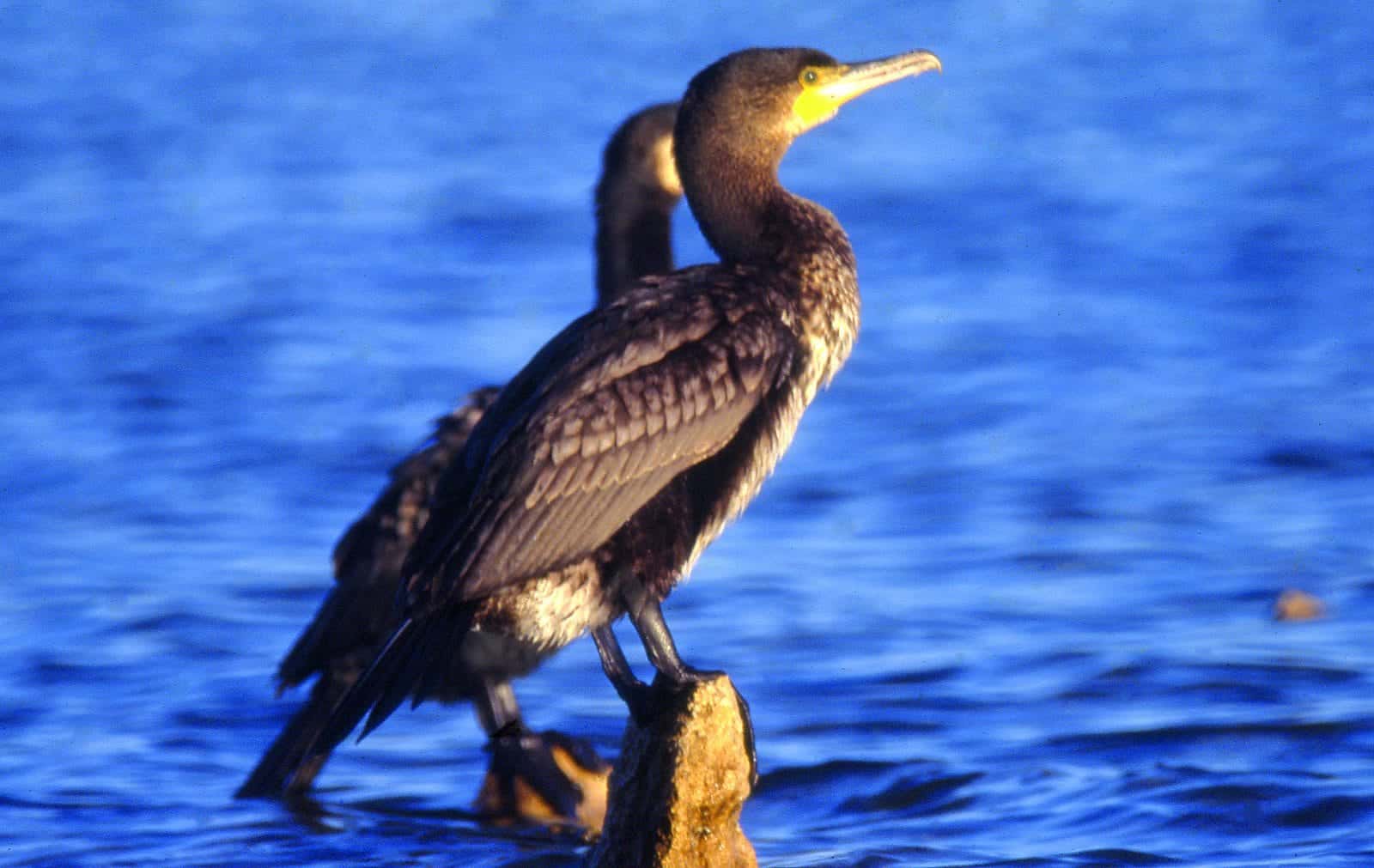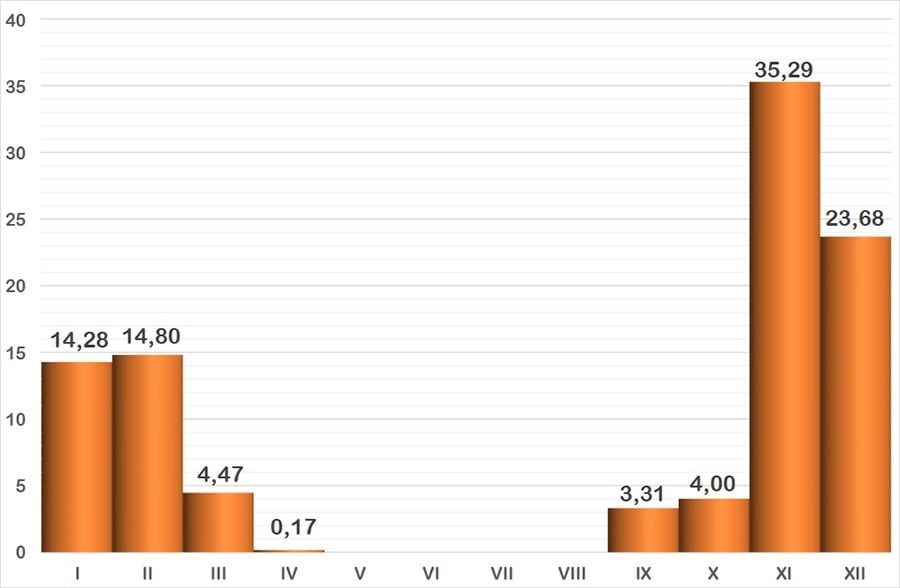The great cormorant is a large and dark-coloured bird, the adult’s body is practically covered with black feathers with metallic green flashes, only interrupted in the mating season by white feathers on the thighs and in the subspecies common to this coast (sienensis) on the back of the head that have a greyish appearance in tufts. It has a robust neck and large head, which in the mating season is adorned by a crest-shaped plume. The beak, which is both sharp and long, and has an orange spot at the base of the lower beak.

Species 1
Great comorant
Scientific name
Family 2
Taxonomic Affinity Group 3
Phenology 4
Typically wintering along our coastline, it arrives in September and leaves in April. The months of November and December the most favourable, although there are years in which they can be observed abundantly throughout the winter.

The graph represents the probability of seeing a species during the year, grouped into months. The vertical axis indicates the percentage value. Each of the bars expresses its value. The horizontal axis represents the months: I = January, II = February, III = March, IV = April, V = May, VI = June, VII = July, VIII = August, IX = September, X = October, XI = November and XII = December.
Observation recommendations
It uses the locations mostly to rest, it is characteristic for its habit of standing upright and with its wings spread on its perches (poles, sand bars, stones, etc.). It is fishing bird and is therefore rare in the wetlands of Roquetas. However, it is not impossible to see it swimming, as it is common on the coast. It swims with its body very submerged, and its beak projected forward, which also makes it distinguishable.
Observation areas where we can find it
Notes
[1] The names used are from the list of birds of Spain, drawn up by SEO/BirdLife and updated to 2019 (https://seo.org/listaavesdeespana/). The reference is: Rouco, M., Copete, J. L., De Juana, E., Gil-Velasco, M., Lorenzo, J. A., Martín, M., Milá, B., Molina, B. & Santos, D. M. 2019. Checklist of the birds of Spain. 2019 edition. SEO/BirdLife. Madrid.
[2] The taxonomic family to which it belongs is indicated.
[3] Traditionally, waterbirds have been grouped according to their taxonomy or “taxonomic affinity”, i.e., when some birds coincide in certain features that allow them to be classified scientifically, but without leaving the rigour of science, they are put together in these groups so that they can be easily recognised. These groups are the following: Greves (belonging to the Podicipedae family), Herons and Similar (includes the families: Ardeidae -Herons- Ciconiidae -Storks- and Threskiornithidae -Ibises and spoonbills-), Ducks (the whole Anatidae family), Coots and Similar (the family Rallidae corresponding to Rails, Gallinules and Coots), Cranes (also with only one family, the Gruidae), Waders , a heterogeneous group, the most diverse of this classification, includes the families Burhinidae (Stone-curlews), Haematopodidae (Oystercather), Recurvirostridade (Avocets and Stilts), Glareolidae (Pranticole), Charadriidadea (Plovers), Scolapacidae and finally Gulls and Similar (the recently unified family Laridae, i.e. Gulls and Terns).
[4] Phenology studies the relationship between the cycles of living beings and meteorological factors, and in our latitude these factors manifest themselves as variations throughout the year, thus relating the seasons to the birds’ cycles (breeding, migratory journeys, etc.) The graph shows the probability of seeing a bird depending on the month. It uses data from 48 bird censuses carried out between October 2016 and September 2018. The method used is that of a census route with sampling stations, with a total count on the sheet of water.
